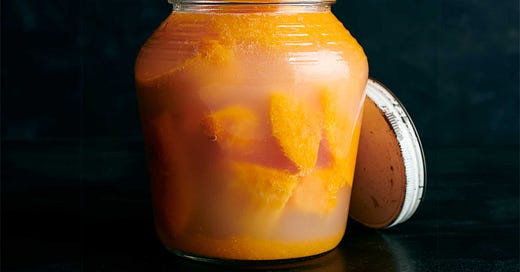The absolute easiest veggie preservation trick
It sounds intimidating, but fermenting those fall veggies is super simple
Hiya squash blossoms, and welcome back to Cool Beans! We’re in the heart of harvest season, when many fruits and veggies are bountiful and at their best. Pretty soon there will be a lot less variety, which got us thinking about how to capture fall produce at its peak. So we’re diving into the Technique Toolbox with James Beard Award–winning editor and c…




